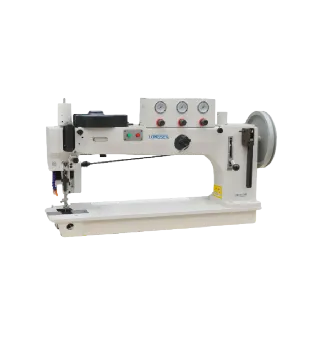sewing thick fabric on sewing machine
Sewing Thick Fabric on a Sewing Machine Tips and Techniques for Success
Sewing thick fabric can be a challenging endeavor for both novice and experienced sewists. Whether you’re working with denim, canvas, upholstery, or multiple layers of quilting, the right approach and tools can significantly enhance your sewing experience. This article will provide you with essential tips and techniques to sew thick fabric smoothly on a sewing machine.
Choosing the Right Sewing Machine
When it comes to sewing thick fabrics, not all sewing machines are created equal. Ideally, you should use a heavy-duty sewing machine that is specifically designed to handle thicker materials. Look for machines with a powerful motor, robust construction, and the ability to sew at a high speed without jamming or skipping stitches. Many modern machines come with features tailored for such tasks, including adjustable presser foot pressure and a walking foot option, which evenly feeds the fabric layers through the machine.
Selecting the Appropriate Needle and Thread
The right needle and thread are vital for sewing thick fabrics successfully. A universal needle may work for lighter materials, but when it comes to heavy fabrics, you should opt for a heavier needle—usually in the range of size 90/14 to 100/16. Specifically, a denim or leather needle is ideal for tough materials. These needles have a larger eye and a tapered point, allowing them to penetrate thick fabric without causing damage.
As for the thread, heavier weights like upholstery thread or high-strength polyester thread are recommended for thick fabrics. They will ensure durability and strength in your seams, which is particularly important for items that will undergo stress, such as bags or clothing.
Preparing Your Fabric
Before you begin sewing, it's crucial to prepare your fabric properly. Prewash and press your fabric to eliminate any shrinkage and to ensure it lies flat. If your fabric is particularly bulky, consider trimming excess seam allowances to reduce thickness in the final seams. Additionally, you can use fabric weights and pins for better accuracy. Avoid using regular pins as they may bend; opt for thicker quilting pins that can easily penetrate the layers.
Adjusting Machine Settings
sewing thick fabric on sewing machine

When sewing thick fabric, adjusting your sewing machine settings can prevent a variety of issues. Start with a longer stitch length—about 3 to 4mm—as shorter stitches may cause excess stress on the fabric and the needle, potentially leading to breakage. Also, increase the presser foot pressure if your machine allows it. This adjustment helps feed the thick fabric evenly through the machine, reducing the risk of puckering.
Utilizing the Right Presser Foot
Using the right presser foot can make a world of difference when sewing thick fabrics. A walking foot, for instance, is specially designed to move the upper fabric layer in unison with the feed dogs, which helps maintain an even stitch without bunching. If you don’t have a walking foot, try using a Teflon foot for materials that have a sticky surface, like vinyl or leather. This foot glides smoothly over thick fabric layers, minimizing friction.
Sewing Techniques
When you finally sit down to sew, there are several techniques you can employ for best results. Start sewing at a slower pace to maintain control over the fabric. If you encounter a particularly thick seam, use the hand wheel to manually lower the needle into the fabric, allowing for a precise start without struggling with the machine’s power. One common challenge is sewing over bulky seams; when you reach this point, you can place a scrap of fabric under the back of the presser foot to create a smoother transition.
Another effective method is to use a seam allowance guide. This guide will help you monitor your stitching while keeping your seam allowances consistent. For decorative edges or reinforced areas, consider using heavier interfacing or additional layers to add structure.
Finishing Touches
After sewing, it’s essential to finish the raw edges to prevent fraying. Depending on your project, you might want to finish seams using a serger, zig-zag stitch, or bias tape. Finally, pressing your seams open can provide a professional look, as it flattens the fabric and enhances the overall appearance of your project.
Conclusion
Sewing thick fabrics may appear daunting, but with the right tools, techniques, and patience, you can produce stunning and durable results. Always remember to take your time, experiment with your machine settings, and trust your instincts as you navigate through this satisfying aspect of sewing. Happy sewing!
-
Boost Production Efficiency with a Pattern Sewing MachineNewsAug.29,2025
-
Industrial Excellence with the Best Heavy Duty Sewing MachineNewsAug.29,2025
-
Precision and Power with the Best Pattern Sewing MachineNewsAug.29,2025
-
Reliable Bulk Packaging Starts With the Right FIBC Sewing MachineNewsAug.29,2025
-
Advanced Packaging Solutions: Elevate Productivity with Jumbo Bag Sewing Machine and Industrial Stitching EquipmentNewsAug.29,2025
-
High-Performance Solutions for Bulk Packaging: FIBC Sewing Machine and MoreNewsAug.29,2025
-
Maximize Efficiency with an Industrial Cylinder Arm Sewing MachineNewsAug.28,2025


























